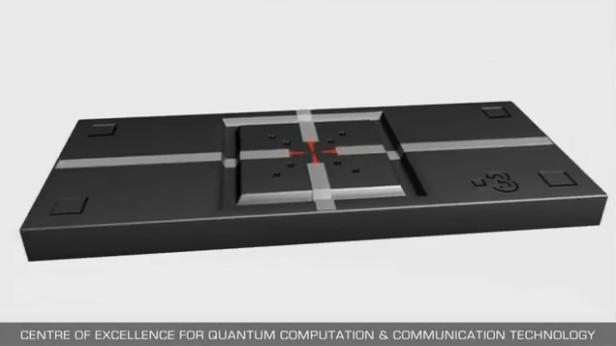

A team of physicists at the University of New South Wales (UNSW) has developed a ‘perfect’ single-atom transistor which could help the industry reach the final limits of Moore’s Law.
Created with a scanning tunnelling microscope (STM), it is composed of a phosphorus atom embedded between atomic-scale electrodes and electrostatic control gates, and could provide a template to be used in future quantum computers, according to the UNSW press release.
“Our group has proved that it is really possible to position one phosphorus atom in a silicon environment – exactly as we need it – with near-atomic precision, and at the same time register gates,” Dr Martin Fuechsle, a research fellow at UNSW, said in a statement.
In addition to the success achieved in creating the highly precise transistor, its electrical properties correspond with predictions made by researchers at the University of Melbourne and Purdue University in the US, joint authors on the paper which appeared in the Nature Nanotechnology journal.
The development of this transistor has a profound impact on Moore’s Law, an observation made fifty years ago by Intel’s Gordon Moore that the number of transistors on a chip would double every eighteen months or so. It’s long been known that the law must break down when transistors are made on an atomic scale – but the UNSW team’s results suggest we may be able to go further into the atomic realm, and get there quicker, than had previously been thought.
“We really decided 10 years ago to start this program to try and make single-atom devices as fast as we could, and beat that law,” said Michelle Simmons. “So here we are in 2012, and we’ve made a single-atom transistor roughly 8 to 10 years ahead of where the industry is going to be.”
Other atomic level results include the use of single -atom films of graphene, and a team of IBM researchers who stored a bit of data using just twleve atoms.
Though the limits of computing have been broadened, quantum computers will yet take time to develop, especially since UNSW’s transistor requires very low temperatures to operate.
SoftBank has agreed a funding deal that will see OpenAI being provided with up to…
Tesla sales have plummeted to lowest level in three years, as deliveries of new EVs…
New addition. Next generation foundation model, as Amazon Nova model launches to perform actions within…
Head of artificial intelligence research at Meta Platforms has announced she is leaving the social…
No decision yet, after media reports CK Hutchison was to spin off its global telecom…
Ahead of 5 April deadline, Trump is to hold White House meeting over possible investors…
View Comments
Making a comparison of being 8-10 yrs ahead of the industry is meaningless. This is a single transistor! Products will need hundreds of billions of them on a 'chip' to compete with 20nm planar MOS. Industrialization of this transistor will take 10-40yrs. Remember Fusion; just because it is possible, doesn't mean it is ever going to be viable.